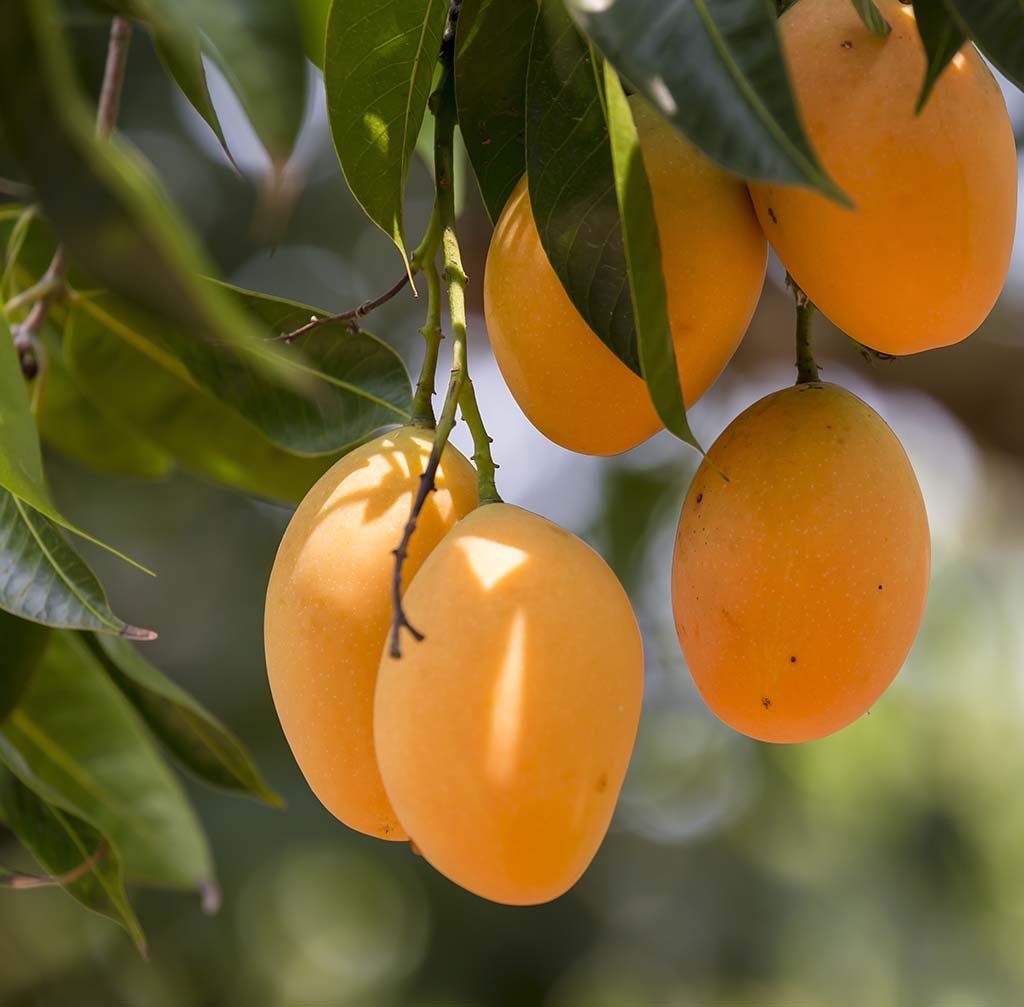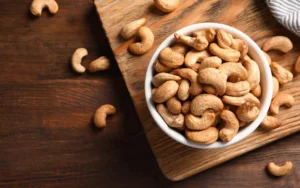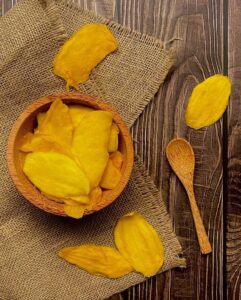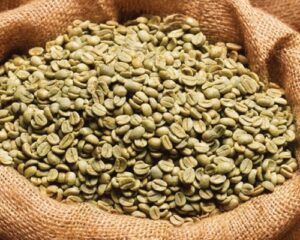Step 1: Choose Naturally Ripe Mangoes
Dried mangoes are selected from naturally ripe mangoes, free from chemical processing, ensuring a sweet and pure aroma. This fruit has been a favorite specialty since the Nguyen dynasty, renowned as the "Queen of Fruits" due to its intense fragrance, beautiful shiny skin, golden flesh, and deep sweetness. The tropical climate and fertile soil of Vietnam further enhance its unique and distinctive flavor.

Step 2: Preliminary Preparation of Mango into Slices
Mangoes, after being harvested, are thoroughly washed with water to remove dirt, bacteria, and impurities, ensuring absolute hygiene. The peeling process is then carried out meticulously to retain the delicious mango flesh. After peeling, the mangoes will be sliced into moderately thick, uniform pieces to ensure the desired texture after drying, not too thin to maintain the natural chewiness.

Step 3: Drying Mango
Mango is marinated with a small amount of natural sugar to create a mild sweetness and support long-term preservation, while maintaining the characteristic natural flavor of the mango. Subsequently, to help preserve moisture, each piece of mango will be dried at a low temperature, resulting in an ideal chewy texture.

Step 4: Quality Check
After drying, the mangoes are thoroughly inspected to ensure they meet the standards for texture, bright yellow color, a sweet and slightly tangy flavor, and uniform size, with an appealing large appearance. Only those pieces that meet the standards and have no defects are transferred to the packaging stage.

Step 5. Arrange the Dried Mangoes on the Tray and Weigh
The dried mangoes, after inspection, will be carefully arranged on a plastic tray, helping to maintain an attractive and uniform appearance. The plastic tray not only ensures that the product remains flat but also limits air from entering the bag, keeping the mangoes better preserved. Accurately weighing each tray ensures that the product delivered to customers is always of the correct weight, while also creating perfect bags of mangoes suitable for luxurious gifts.

Step 6. Packaging and Preserving the Finished Product
After the dried mangoes have been weighed to the required mass, each tray of mangoes will be placed into packaging and the bag will be sealed immediately. The sealing method helps protect the product from the intrusion of air and moisture, keeping the dried mangoes delicious and preserving them for a long time. The packaged dried mango bags are stored in a clean, dry, and cool environment, away from direct sunlight, moisture, or high temperatures. These storage conditions help the dried mangoes maintain their softness, natural flavor, and long-lasting nutritional value.

Vietnam's Seasonal Specialties Dried Mango – A pure gift from nature, taking you on a journey to savor the gentle sweetness and original chewy fragrance of Vietnamese mangoes.
- Sourced from Vietnam’s Finest Mango Regions: Carefully selected from renowned mango-growing areas such as Đồng Nai and the Mekong Delta, where the tropical climate nurtures the most flavorful and high-quality mangoes. Vietnam's Seasonal Specialties Dried Mango.
- Safe Production Process for Your Health: Proudly processed with no artificial flavors, colorings, or preservatives, ensuring a fresh, natural color while preserving the valuable nutrients of ripe mangoes.
- Authentic Vietnamese Mango Flavor : With minimal added sugar, Vietnam's Seasonal Specialties Dried Mango delivers a naturally mild sweetness, soft and chewy texture, with a hint of crispness and light tanginess.
- Trusted Purchase Locations: Vietnam's Seasonal Specialties Dried Mango is available at our chain of stores in airports and Linh restaurant locations.








